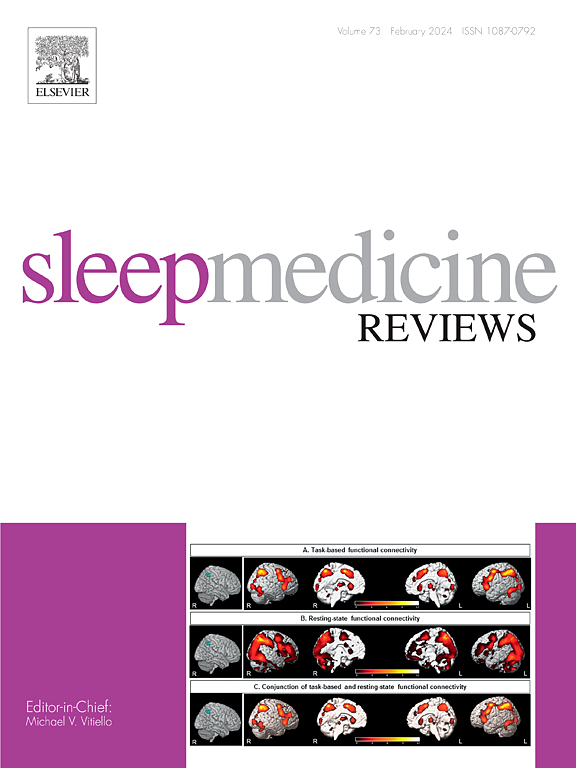The impact of traumatic brain injury on sleep and associated neuroimaging changes: A systematic review
IF 9.7
1区 医学
Q1 CLINICAL NEUROLOGY
引用次数: 0
Abstract
Sleep disturbances are among the most common neuropsychiatric symptoms following traumatic brain injury (TBI). However, no review has sought to identify the major neuroimaging correlates of post-TBI sleep disturbances across multiple imaging modalities. This systematic review aimed to describe post-TBI neuroimaging changes associated with self-reported and objective markers of sleep disturbance using computed tomography (CT), magnetic resonance imaging (MRI), and quantitative electroencephalography (qEEG). 21 studies were included in this review, comprising the data of 3176 individual with TBI and 396 individuals without TBI. While acute intracranial abnormalities on CT were not reliable predictors of self-reported symptoms of insomnia, measures of axonal integrity on diffusion tensor imaging (DTI), particularly involving cortico-subcortical white matter tracts such as the uncinate fasciculus, were highly associated with self-reported sleep disturbance. Individuals with TBI were also found to have decreased delta power and increased beta power on qEEG during sleep, providing preliminary support for the functional role of the hypothalamus in the pathogenesis of post-TBI sleep disturbance. Key study limitations include small sample sizes and heterogeneity of TBI severity and chronicity. Functional neuroimaging studies are needed that elucidate which alterations in white matter connectivity may be most implicated in the neurocircuitry of post-TBI sleep disturbance.
外伤性脑损伤对睡眠和相关神经影像学改变的影响:系统综述。
睡眠障碍是创伤性脑损伤(TBI)后最常见的神经精神症状之一。然而,尚无综述试图通过多种成像方式确定脑外伤后睡眠障碍的主要神经影像学相关因素。本系统综述旨在通过计算机断层扫描(CT)、磁共振成像(MRI)和定量脑电图(qEEG)描述脑外伤后与自我报告和客观睡眠障碍标志物相关的神经影像学变化。本综述纳入了21项研究,包括3176例TBI患者和396例非TBI患者的数据。虽然CT上的急性颅内异常并不是自我报告的失眠症状的可靠预测指标,但弥散张量成像(DTI)的轴突完整性测量,特别是涉及皮质-皮质下白质束(如钩侧束)的测量,与自我报告的睡眠障碍高度相关。研究还发现,脑外伤患者睡眠时qEEG的δ功率下降,β功率增加,这为下丘脑在脑外伤后睡眠障碍发病机制中的功能作用提供了初步支持。主要的研究局限性包括样本量小和TBI严重程度和慢性程度的异质性。需要功能性神经影像学研究来阐明哪些白质连接的改变可能与脑外伤后睡眠障碍的神经回路最相关。
本文章由计算机程序翻译,如有差异,请以英文原文为准。
求助全文
约1分钟内获得全文
求助全文
来源期刊

Sleep Medicine Reviews
医学-临床神经学
CiteScore
20.10
自引率
3.80%
发文量
107
期刊介绍:
Sleep Medicine Reviews offers global coverage of sleep disorders, exploring their origins, diagnosis, treatment, and implications for related conditions at both individual and public health levels.
Articles comprehensively review clinical information from peer-reviewed journals across various disciplines in sleep medicine, encompassing pulmonology, psychiatry, psychology, physiology, otolaryngology, pediatrics, geriatrics, cardiology, dentistry, nursing, neurology, and general medicine.
The journal features narrative reviews, systematic reviews, and editorials addressing areas of controversy, debate, and future research within the field.
 求助内容:
求助内容: 应助结果提醒方式:
应助结果提醒方式:


